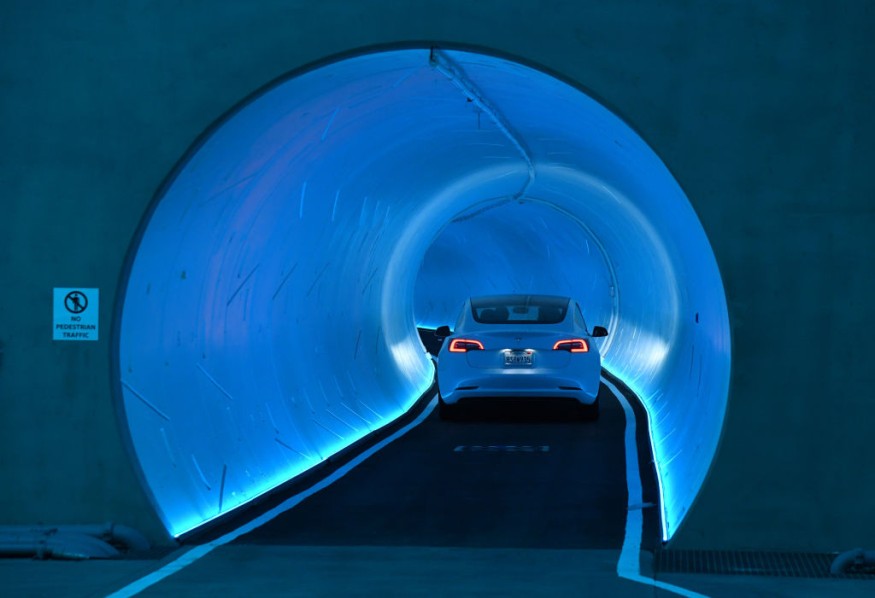The Boring Tunnel Loop beneath Las Vegas, built by Elon Musk, launched this week, moving people along a 1.7-mile stretch of underground road with three passenger stations.
The Las Vegas Convention Center (LVCC) tunnel, built by Musk's Boring Company and opened on June 8, uses Teslas as a vehicle fleet to transport passengers between the Las Vegas Convention Center and the West and South Stations, with the convention center serving as a hub.
According to the Los Angeles Business Journal, the construction cost $52.5 million in total. The convention center began to hold gatherings again as COVID-19 health rules began to soften. The project took around 18 months to complete.
The completion of the LVCC tunnel system comes as Las Vegas continues to promote the city as a destination for tourists and business gatherings while the US economy recovers from the COVID-19 epidemic.

Elon Musk Wants To Develop Loops To Reduce Traffic Congestions
Musk founded the Boring Company to help realize that vision and to construct "Loops," low-cost intracity tunnel networks that will help America's "soul-destroying" traffic.
He imagined a system created just for express travel that could grow indefinitely by drilling new tunnels and eventually run fully autonomous vehicles.
"Boring Co. urban loop system would have thousands of small stations the size of a single parking space that takes you very close to your destination and blends seamlessly into the fabric of a city, rather than a small number of big stations like a subway," he tweeted in early 2018.
Boring Co urban loop system would have 1000’s of small stations the size of a single parking space that take you very close to your destination & blend seamlessly into the fabric of a city, rather than a small number of big stations like a subway
— Elon Musk (@elonmusk) March 9, 2018
By reducing the tunnel diameter, switching from diesel to electricity, and boosting boring speed with increased power, continuous drilling, and automation, the company claimed to have decreased tunneling expenses by 15 times to $10 million per mile.
ALSO READ : Elon Musk SpaceX Constructing Ocean Spaceport Deimos; Is It Allocated for Starship Launch Next Year?
"This technology [can] change transportation not only here at the convention center but around the country and around the world," Steve Hill, Las Vegas Convention and Visitors Authority (LVCVA) president, told Curbed when the tunnel broke ground in November 2019.
How The Loop Works?
Elon Musk's Loop Tunnel works simply in just three steps:
- You need to take transportation underground to avoid bottlenecks.
- Put Teslas on a one-way loop and provide on-demand trips to simplify the transportation experience.
- Make tunnels where there was once dirt.
In addition, the experience is shockingly straightforward. Get into your automobile, drive through a tunnel, and emerge on the other side. While it may not be the high-speed robo-taxi of the future many had hoped for, it is undeniably the future of convenience.
The 1.7-mile Vegas Loop comprises three passenger stations (two above ground and one below), which are connected by 12-foot-wide tunnels that are all illuminated with color-changing LED lights. In addition, a fleet of 62 Teslas circuits the Loop. It picks up and drops off passengers, reducing a 25-minute walk across the massive convention center to a two-minute all-electric trip.
Another CNet report said that while the Boring Company debuted its first tunnel in California in late 2018, this is the first Loop entirely operational and accessible to the general public, although passengers need to attend a convention at the LVCC to be able to ride.
Elon Musk's Boring Loop Is Just The Start!
According to CNet, Lori Nelson-Kraft of the LVCA said that the Loop is only the beginning. The Boring Company wants to expand the Loop from downtown Las Vegas, past the strip's core tourist area, and out to the city's stadium and airport, which Nelson-Kraft describes as a "gamechanger" for the city's transportation. Riders will order a car through an app, similar to how they would rideshare, and the drivers would eventually vanish.
You might have to wait a long time if you were hoping for Musk's euphoric vision of the future. However, your journey has come if you want to travel via a rainbow tunnel without dealing with traffic.
Check out more news and information on Elon Musk in Science Times.











